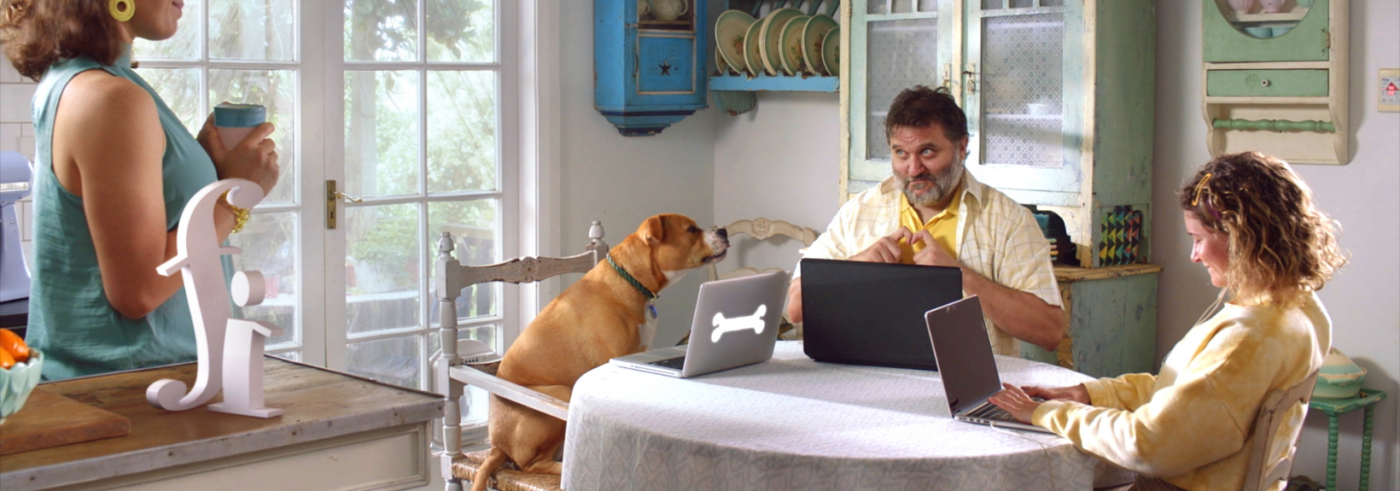Websites are often the first touch point consumers have with your brand and it is a media channel that you totally control. So why is it so many of them are so unengaging?
Websites should be totally true to the brand and represent an experience that enhances it. If we can win with our websites, we can be more empathetic, more persuasive, and ultimately more profitable. I am not writing this to downplay the importance of user experience or conversion rate optimization. But instead, to keep sight of your brand, your tone of voice, and personality. In a post-covid age, website visitation has further exploded, so these factors have never been more important.
How do we bring that traditional instore experience to the digital environment? This blog is about so much more than your website.

At Contagion, I help brands find their purpose, define their values, crack key consumer insights, and work collaboratively with our clients to ensure these values & insights permeate all channels including online. Since COVID accelerated our digital adoption – there are new expectations from consumers on their digital experiences. This means we need to merge the physical & digital operations for our businesses – particularly in the retail space.
We must find what is important to customers. It doesn’t matter if you are a tech start-up, a great food brand or in health care. Consumers are interested in themselves, not your brand. They want to feel smart, they like things simple, they want to smile, they crave status, they also want to feel cared for and feel popular.
The thing is, digital lacks inherently what it means to be human. It is efficient, has infinite capacity and is scalable, but it is also binary, inflexible, and lifeless. It is up to us, as good humans, and brand owners to makeit memorable, empathetic and intuitive
As a great example of this look up Google’s DeepMind simulation of a ‘human’ learning. This may be the most efficient way to run, but it is utterly ridiculous, it may be efficient, but you would be locked up if you ran like this. So, it is up to us to put the life and empathy back into our digital processes.
This is where my research started. To make things very human I naturally turned to psychology, which has been a lifelong love of mine. We need to look at what makes us really motivated. This means doing an activity that is inherently interesting and satisfying, not just because of the end goal. Self-determination theory covers just that. We can break down motivation into its components that have to be satisfied, in order for us to find things inherently rewarding and motivational. From commercial perspective satisfaction leads to sales and loyalty.
So what are these three components?
We want users act with willingness and a feeling that their personal goals are aligned with the site. To this end, we cannot just sell but really think through the user’s ideal state of mind ability to navigate
Make users feel able and effective. In essence, we want them to feel smart when they use our site.
Makes users feel connected to others/community, they feel cared for and empathy
Following this theory will lead to better digital experiences, which lead to better customer outcomes, which of course lead to better business outcomes. So, in a way we are talking about UX here, we are just relating it directly back to the emotional brain of human beings.
Finally, I have two simple measures for you to keep in mind, that will help in judging any website project you may have.
This comes down to the architecture, Is it accessible, simple, intuitive, useful and resourceful
This is where as marketeers we can add true value. Make the site entertaining, empathetic, educational, motivational and rewarding.
I hope you find this helpful. Remember your website is your brand home, so give people a warm welcome.
I’ll be the first to admit I’ve enjoyed a fair few evenings on a YouTube binge session. Autoplay, tantalising thumbnails, coupled with infinite content - it’s easy to let yourself go. We all have. It’s okay.
But YouTube is more than an endless well of novel entertainment. Like any platform with an audience, YouTube doubles as an incredibly powerful marketing tool. I would say it’s one of the most cost effective channels to reach New Zealand audiences in 2021.
If you haven’t yet, here are four reasons why you should consider adding YouTube to your marketing mix in 2021.

It’s no secret that YouTube is popular. YouTube is New Zealand’s #1 social media platform, and our second-favourite website (behind Google.com). 87% of New Zealanders are using YouTube each month - more than Facebook (83%) and Instagram (57%).
With 3.92 million kiwis visiting YouTube every month, watching 30 minutes per day, it’s an excellent opportunity to get your brand in front of anyone and everyone.
You may have existing 15 or 30 second video assets created for TVC. In addition to sharing these on social media, they can also be used across YouTube to get extra mileage from your video.
We note that the nature of YouTube ad placements does differ from other digital inventory across social media. YouTube offers non-skippable 6 and 15 second ad formats which essentially “brickwall” content. This means users have to watch the entirety of your ad in order to view their video.
In contrast, other digital placements - such as display or video ads on social media - sits between content. Users navigating other social media such as Facebook and Instagram are generally able to scroll past ads and move directly to their content with relative ease.
YouTube falls within the suite of Google advertising. Naturally, YouTube enjoys the same powerful targeting options as seen in Google Ads.
In addition to your standard interest and contextual targeting options, a key competitive advantage of YouTube targeting is the ability to manually select specific channels and videos you’d like your ads to appear on.
Broadly speaking, New Zealand’s digital industry is generally a few years behind Australia and the US. While we do love to whinge about it, in this scenario, I would argue it actually works in our favour.
Compared to other Google-owned platforms such as Search and Display, the YouTube space today is extremely cheap. While there is a low barrier to entry to other digital advertising such as Google Search or Facebook Ads, not all businesses have video assets
This leads to relatively low competition today. With a $1,000 investment, you could expect to drive around 70,000 ad impressions and reach over 40,000 users.
The lockdowns of 2020 have been the single greatest thing to happen to digital since the launch of the iPhone. Those who had over invested in their website in the past were validated, while those who had stalled development over invested quickly in the hope of managing sudden demand or providing a storefront for customers. Digital transformation was rife.
Coffee shops implemented online ordering; Countdown transitioned a bricks-and-mortar store to meet the surge in online orders. Even farm-supplies co-ops rushed to get their products online for traditional farmers and growers.
Now that the dust has settled, let’s get pragmatic about digital transformation. The surge – likely to mean a permanent shift – has calmed and now is a good time to discuss digital transformation with inside voices and be realistic about its benefits.

For most New Zealand businesses, 5G will not change your business, you don’t need blockchain, voice search won’t replace Google and Bitcoin is not yet a viable currency.
But all businesses can consider the following:
Cloud storage – Google, DropBox and OneDrive are versatile and inexpensive.
Dashboards – Track KPIs in an automated and visual manner.
Customer relationship manager (CRM) – HubSpot is a free, easy-to-use option offering contact management and email marketing. See note below on customer data and the Privacy Act.
With few exceptions, you need a website.
If you cut hair, customers need to know your hours. If you sell a product, they want to see it. If your business relies on leads, make it easy to make contact.
Websites don’t need much to be useful, and less is often more. A simple website via SquareSpace, Wix or Shopify is enough for 95 percent of New Zealand businesses.
If you want to go above and beyond, a strategic web developer can go a long way to achieving this. As can:
- Non-stock footage taken by a professional photographer/videographer.
- Well-written copy.
- A good designer.
- A simple password policy.
Once again, less is more. When social media surged in 2012, every business felt it needed Twitter, Pinterest and a YouTube channel.
While product videos can be useful in any sector, these channels quickly fell inactive, creating a social graveyard.
- If you interact with consumers, get Facebook and consider Instagram.
- If you interact with businesses, get LinkedIn.
- You don’t need a TikTok account.
- Start by asking “What content can we create with our current resources?” instead of “Which platform should we be on?”
The fable that digital solves the problem of “half of my advertising is wasted” is only partially true, but a little can go a long way.
Paid Search is widely considered the most efficient advertising for budgets of all sizes. Instead of pushing customers to buy your product, you pull actively searching customers toward your brand.
Be clear about the desired outcome, implement tracking, and then a little self-education and monthly fine-tuning are enough to drive additional traffic or sales.
Facebook – in between boycotts – is the second-most-efficient digital advertising channel. Implement proper goal tracking, start small and try your hand at different audiences including remarketing and lookalike. Facebook has scale for efficient and wasteful advertising – don’t regret your investment.
Digital advertising is heading toward a day of reckoning. Google and other browsers are about to bury advertising cookies, meaning less conversion tracking and reliance on third party audiences. Trusted and credible environments are scarce yet are the most important factors for building a brand online – a premium to get your brand into credible local environments – are often justified for that very reason.
Beyond these tips, you may want to get a specialist involved as the topic becomes particularly nuanced and complicated.
While Big Tech dominates the headlines in this subject, all businesses should think about their customer data and become familiar with the first update to the Privacy Act since 1993.
Customer emails will become increasingly important with the demise of cookies, so consider how you can grow your email list. This doesn’t mean intrusively demanding an email, it means a genuine value exchange: “Get 5 per cent off your first purchase” or “Get our market report” are often enough for customers to share their information with you.
With the power of personally identifiable information (PII) comes equal responsibility:
- Your customers may be able to request access to or removal of their personal data.
- You need to take steps to ensure the security of this information.
- You need to report any breach to the Privacy Commissioner.
- Breaches can incur fines of up to $10,000.
- While this may sound intimidating, customer relationship managers such as HubSpot are already across these and are infinitely better than your current customerlist.xlsx
It is fair to approach digital with a healthy dose of cynicism – the revolution will be televised, bricks and mortar will continue to thrive and your brand doesn’t need a TikTok channel. While evangelists may try scaremongering tactics to convince you otherwise, the lockdowns showed us something else: we occasionally like to deal with people.
Digital transformation is important, and the way has been paved for all. Take it at your own pace. Slow and steady. Don’t just implement something for the sake of it. Talk to your team members, get their perspectives and continue to improve it. Transformation is a process, not a one-off.